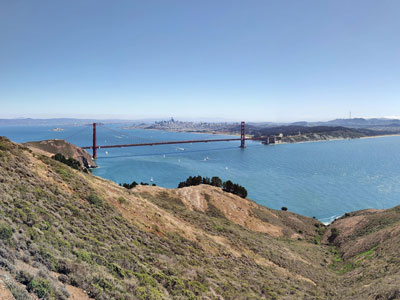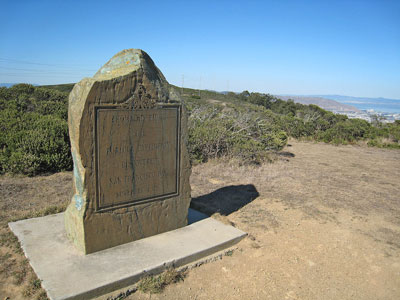Golden Gate National Recreation Area Travel Guide
National Recreation Area protecting ecologically and historically significant landscapes surrounding the San Francisco Bay Area and is one of the largest urban parks in the world
Overview
The Golden Gate National Recreation Area (GGNRA) is a National Recreation Area protecting 82,027 acres (33,195 ha) of ecologically and historically significant landscapes surrounding the San Francisco Bay Area. Much of the park is land formerly used by the United States Army. GGNRA is managed by the National Park Service and is the most visited unit of the National Park system in the United States, with more than 15 million visitors a year. It is also one of the largest urban parks in the world, with a size two-and-a-half times that of the consolidated city and county of San Francisco.The park is not one continuous locale, but rather a collection of areas that stretch from southern San Mateo County to northern Marin County, and includes several areas of San Francisco. The park is as diverse as it is expansive; it contains famous tourist attractions such as Muir Woods National Monument, Alcatraz, and the Presidio of San Francisco. The GGNRA is also home over 3,000 plant and animal species, encompasses 59 miles (95 km) of bay and ocean shoreline and has military fortifications that span centuries of California history, from the Spanish conquistadors to Cold War-era Nike missile sites.
History
The park was created thanks to the cooperative legislative efforts of cosponsors Congressman William S. Mailliard (R-San Francisco) and Congressman Phillip Burton (D-San Francisco). The plan for a non-contiguous national recreation area was conceived by Dr. Robert Busha, an administrator in Mailliard's Washington office, as a way to circumvent the prevailing limitation that national park property should be contiguous. In 1972, President Richard Nixon signed into law "An Act to Establish the Golden Gate National Recreation Area." The bill allocated $120 million for land acquisition and development. The National Park Service first purchased Alcatraz and Fort Mason from the U.S. Army. Then to complete the national park in the north bay, the Nature Conservancy purchased the land in the Marin Headlands that made up the failed development project called Marincello from the Gulf Oil Corporation. The Nature Conservancy then transferred the land to the GGNRA. These properties formed the initial basis for the park.
Throughout the next 30 years, the National Park service acquired land and historic sites from the U.S. Army, private landowners and corporations, incorporating them into the GGNRA. The acquisitions range from the historic Cliff House restaurant and Sutro Baths in San Francisco, to large and expansive forest and coastal lands, such as Sweeney Ridge in San Mateo County and Muir Woods National Monument in Marin. Many decommissioned Army bases and fortifications were incorporated into the park, including Fort Funston, four Nike missile sites, The Presidio and Crissy Field. The latest acquisition by the National Park Service is Mori Point, a small parcel of land on the Pacifica coast.
In 1988, UNESCO designated the GGNRA and 12 adjacent protected areas the Golden Gate Biosphere Reserve.
This article uses material from the Wikipedia article "Golden Gate National Recreation Area", which is released under the Creative Commons Attribution-Share-Alike License 3.0
This article uses material from nps.gov "Death Valley National Park"
Featured Areas

Tarwin Stroh-Spijer, CC BY-SA 4.0, via Wikimedia Commons; Image Size Adjusted
Marin Headlands Area
Hilly peninsula located just north of San Francisco across the Golden Gate Bridge
-400.jpg)
Laika ac from USA, CC BY-SA 2.0, via Wikimedia Commonss; Image Size Adjusted

Richard Wood, CC BY-SA 3.0, via Wikimedia Commons; Image Size Adjusted
Sweeney Ridge
Hilly hiking area of ridges and ravines between San Bruno and Pacifica, California